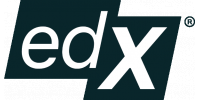- Sur www.edx.org
Introduction to Semiconductors, PN Junctions and Bipolar Junction Transistors

- À son rythme
- Accès libre
- Certificat payant
- 8 séquences
- Niveau Intermédiaire
- Sous-titres en Chinese
Détails du cours
Déroulé
Week 1: Intrinsic semiconductor materials
Introduction to the energy band diagram of a crystal and calculating the carrier concentration in the material.
Week 2: Doping and PN junction formation
The effect of doping and the formation of PN junctions.
Week 3: Current-voltage characteristics of PN junction diodes
Current-voltage characteristics and detailed carrier actions in a PN junction diode.
Week 4: Real PN junction characteristics, its model and design
The characteristics of real PN junction diodes, the charge and capacitance models, and the design strategy.
Week 5: PN junction optical properties and metal-semiconductor contacts
The optical responses of the PN junction; the working principles of optical detection, solar cells and LEDs; and the metal-semiconductor contacts.
Week 6: Basic operation of Bipolar Junction Transistor
Introduction to bipolar junction transistors, I-V characteristic and non-ideal effects.
Week 7: Real Bipolar Junction Transistor structures, switching characteristics and model
Switching characteristics of the Bipolar Junction Transistor, it circuit model and design strategy.
Week 8: Final Exam
Prérequis
- Basic high-school chemistry and knowledge of the periodic table
- Basic algebra
- Basic calculus
Intervenants
Mansun Chan
Chair Professor, Department of Electronic and Computer Engineering
The Hong Kong University of Science and Technology
Éditeur

Plateforme
EdX est une plateforme d'apprentissage en ligne (dite FLOT ou MOOC). Elle héberge et met gratuitement à disposition des cours en ligne de niveau universitaire à travers le monde entier. Elle mène également des recherches sur l'apprentissage en ligne et la façon dont les utilisateurs utilisent celle-ci. Elle est à but non lucratif et la plateforme utilise un logiciel open source.
EdX a été fondée par le Massachusetts Institute of Technology et par l'université Harvard en mai 2012. En 2014, environ 50 écoles, associations et organisations internationales offrent ou projettent d'offrir des cours sur EdX. En juillet 2014, elle avait plus de 2,5 millions d'utilisateurs suivant plus de 200 cours en ligne.
Les deux universités américaines qui financent la plateforme ont investi 60 millions USD dans son développement. La plateforme France Université Numérique utilise la technologie openedX, supportée par Google.

